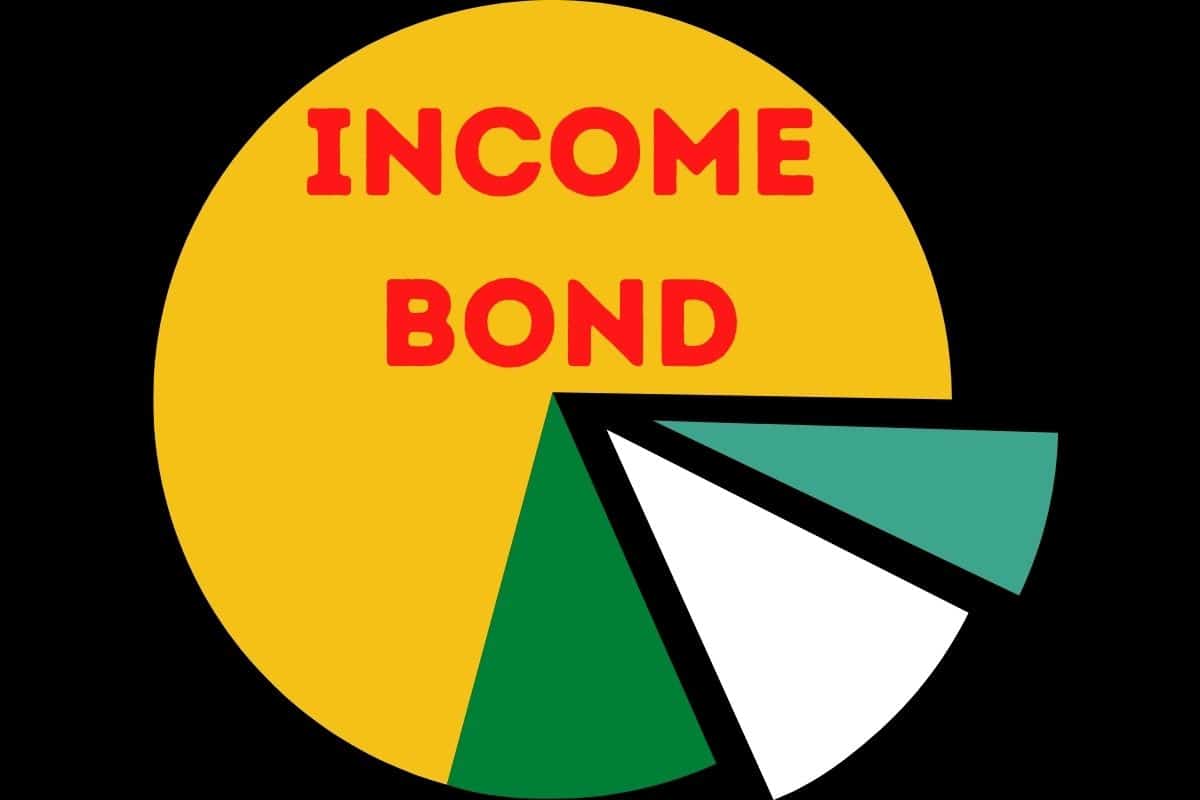Due to the amount of risk involved, investing can be scary, especially for newcomers and those who will soon be retiring. If you invest your money, you run the risk of losing some or all of it with no guarantee that you will ever recover those losses. It is crucial to balance your portfolio with lower-risk items for this reason. And one way to do it is through fixed-income investing. Therefore, this post will expose you to the examples of best fixed income investments to do both for retirement sake and starting investors.
Fixed Income Investments
In general, investment securities that offer fixed interest or dividend payments to investors until their maturity date are referred to as having a fixed income. Investors receive their principal investment back when the investment reaches maturity. Thus, bonds issued by governments and corporations are the most popular fixed-income vehicles.
Unlike equity investments, which may not provide cash flows to investors, or variable-income securities, whose payments can fluctuate depending on some underlying facto. Such factors include short-term interest rates, and fixed-income security payments which are predetermined and will not alter over time.
How to Invest in Fixed Income
Investors have a variety of alternatives when deciding how to add fixed-income assets to their portfolios. Most brokers today provide direct access to a variety of bond markets, including Treasuries, corporate bonds, and municipal bonds. Bond funds offer exposure to a variety of bonds and debt instruments for those who do not want to choose individual bonds. These funds give investors access to an income stream through expert portfolio management. While fixed-income ETFs function similarly to mutual funds, they may be more affordable and more accessible to individual investors. Moreover, these ETFs could have certain durations, credit ratings, or other objectives and they are also charged for expert management.
Fixed-income investment is often a conservative strategy where profits are derived from predictable interest-paying low-risk instruments. The interest coupon payments are often smaller because the risk is lower. Bonds, bond mutual funds, and certificates of deposit (CDs) can all be included in a fixed-income portfolio. The laddering strategy is one such fixed-income product-based technique.
Best Fixed Income Investments
Below is the list of the best fixed income investment to invest on;
#1. High-Yield Savings Accounts
Savings accounts provide a little return on your money even though they are not officially investments. The greatest yielding options may be found online, and if you’re prepared to look at rate tables and comparison shops, you can obtain a little bit more yield. You can never lose money in a high-yield savings account, therefore it is absolutely safe. The majority of accounts are government-insured up to $250,000 per account type per bank, so even if the financial institution collapses, you will still be compensated.
#2. Series I Savings Bonds
A Series I savings bond is an inflation-adjusted, low-risk bond that helps safeguard your money. The interest rate on the bond is increased in response to rising inflation. But if inflation declines, so does the bond’s payment. The U.S. Department of the Treasury’s website TreasuryDirect.gov is where you can purchase the Series I bond. The Series I bond’s payment is adjusted semi-annually in response to inflation. This bond offers a substantial yield due to the high levels of inflation. In the event that inflation keeps increasing, there will be an adjustment. Therefore, the bond helps shield your investment from the effects of rising costs.
#3. Short-Term Certificates of Deposit
Unless you withdraw the money early, bank CDs in an FDIC-backed account are always loss-proof. You should surf around online and compare what banks have to offer in order to discover the best rates. Owning short-term CDs and reinvesting as interest rates climb in 2023 may make sense given that rates are already on the rise. You should avoid staying too long in CDs that are below market. The bank guarantees to pay you a fixed rate of interest for the duration of the stipulated term if you keep the CD undamaged until it expires. Some savings accounts provide interest rates that are higher than some CDs, but the deposits for these so-called high-yield accounts may be substantial.
#4. Money Market Funds
Money market funds, which are often offered by brokerage firms and mutual fund companies, are collections of certificates of deposit, short-term bonds, and other low-risk investments that have been put together to spread risk. A money market fund, in contrast to a CD, is liquid, meaning you can normally withdraw your money whenever you want without incurring fees.
#5. Corporate Bonds
Corporations also issue bonds, which range in risk from very low-risk (issued by big, successful corporations) to very dangerous (issued by smaller, unprofitable enterprises). High-yield bonds, also referred to as “junk bonds,” are the lowest of the lowest. Investors can choose bonds with maturities in the following few years to reduce interest rate risk. Bonds with longer maturities are more susceptible to changes in interest rates. Investors can choose high-quality bonds from significant, respected corporations to reduce default risk or they can purchase funds that invest in a diverse portfolio of these bonds.
#6. Dividend-Paying Stocks
Although they aren’t as safe as cash, savings accounts, or government debt. These stocks typically carry less risk than volatile investments like futures. Because dividend stocks pay cash dividends, which helps to reduce their volatility but does not entirely eliminate it, they are regarded as being safer than high-growth equities. Therefore, dividend stocks will vary along with the market, though they might not fall as far when the market is down. Dividend-paying stocks are typically viewed as being less risky than non-paying stocks.
Fixed Income Investments Examples
The most typical form of fixed income security is a bond, which can be issued by both private and public sector organizations. Other examples of fixed income investments include money market instruments, asset-backed securities, preferred securities, and derivatives. Let us look at some examples of fixed income investments:
#1. Bonds
By itself, the subject of bonds constitutes a whole field of financial or investment study. They can be broadly characterized as loans made by investors to an issuer with the promise of principal repayment at the specified maturity date and recurring coupon payments (often made every six months), which reflect interest on the loan. The reasons for these loans can vary greatly. Governments or businesses who are searching for methods to finance initiatives or operations frequently issue bonds.
#2. Money Market Instruments
Commercial paper, banker’s acceptances, certificates of deposit (CD), repurchase agreements (“repo”), and US Government Treasury Bills, also known as T-bills for short, are a few examples of investments that fall under the umbrella of money market tools. T-bills are also the most commonly traded security in this category.
#3. Asset-Backed Securities (ABS)
Asset-backed Securities (ABS) is one of the examples of fixed income investments that are backed by financial assets that have been “securitized,” such as receivables from credit cards, loans for cars, or loans for home equity. The ABS stands for a group of these assets that have been bundled into a single fixed-income instrument. Asset-backed securities are typically an alternative to corporate debt for investors.
#4. Preferreds
These fixed income assets, often known as subordinated debt, are lower on the capital stack. If the issuer’s creditworthiness declines, preferred fixed-income instruments may stop paying their coupons or principal. Preferreds are frequently seen as a hybrid asset between fixed income and equities because of the risk known as loss absorption.
#5. Derivatives
There have been numerous financial contracts in the capital markets with varying payoffs based on the behavior of other securities. These are referred to as “Derivatives,” and in fixed income, we see these derivatives extensively traded for speculating, hedging, and gaining access to additional assets or markets. Examples of derivatives fixed income investments include swaps, options, and structured products.
Best Fixed Income Investments for Retirement
When you are retired, you can take pleasure in your accomplishments and unwind without worrying about the daily grind of work. Securing a fixed income stream to satisfy their needs is one of the most important retirement planning investments, but for the majority of individuals, it can be overwhelming.
Understanding Fixed Income Investments For Retirements
Bonds, CDs, and other fixed-interest investments are some examples of these retirement investments. Due to their consistent income stream and decreased risk of loss, fixed-income investments are typically regarded as less hazardous than equity investments. Thus, below is a list of the retirement fixed income investments to opt for:
#1. Bonds
In return for regular interest payments and the return of the principle at the bond’s maturity date, investors who purchase bonds lend money to businesses or the government. Due to the fact that stable companies often issue bonds with strong credit ratings, they are seen as a secure investment. They are a popular option for retirees because they also offer a steady stream of income.
#2. Certificates of Deposit (CDs)
Another sort of fixed-income investment is a certificate of deposit (CD), which allows investors to lend money to banks for a predetermined amount of time in exchange for a fixed interest rate. Due to the FDIC’s insurance coverage of up to $250,000 per depositor, per institution, CDs are regarded as a secure investment. Retirement investors should consider CDs since they guarantee the principal and provide a guaranteed return.
#3. Annuities
Fixed-income investments called annuities can offer seniors a consistent income stream for the duration of their retirement. Insurance firms issue a variety of annuities, such as fixed annuities, variable annuities, and indexed annuities.
Read Also: EARLY RETIREMENT: How To Plan For Early Retirement
Factors that Affect Fixed Income Investments
Retirement investors can make wise investment choices by being aware of the various elements that influence fixed-income investing.
#1. Interest Rates
Fixed-income assets depend heavily on interest rates, and changes in interest rates can affect the returns on these investments. For instance, the value of current fixed-income investments declines when interest rates rise and vice versa. Therefore, while selecting fixed-income assets, retirees should take the present interest rate environment into account.
#2. Credit Risk
Another significant element that influences fixed-income investing is credit risk. Credit risk is the possibility that the borrower won’t be able to pay back the loan, which could cause the investor to suffer a loss. As a result, retirees should take into account both their ability to pay off debt and the credit rating of the company producing the fixed-income investment.
Choosing the Best Fixed Income Investments for Retirement
It might be difficult to select the best fixed-income assets for retirement, but knowing your investment objectives and risk tolerance will help you make wise choices. Lets us take a look at some of them:
#1. Investment Goals
When selecting fixed-income assets, retirees should take their investment objectives into account. For instance, people might select assets with a larger yield, like high-yield bonds, if they need the money to pay for their daily costs. On the other hand, if customers want a safe investment alternative, they might select CDs or other investments with a lower yield.
#2. Risk Tolerance
When selecting fixed-income investments, retirees should also take their risk tolerance into account. They might select investments with reduced credit risk, such as government bonds if they have a low-risk tolerance. They might pick investments with a greater yield, such as corporate bonds, if they are prepared to assume additional risk, though.
What Is Fixed and Variable Income Investments?
It is an investment that offers a return in the form of consistent, set payments over time and an eventual principal return at maturity. Payments fluctuate in securities with variable income according to some underlying benchmark measure, such as short-term interest rates.
What Is an Example of a Variable Income Investment?
Stocks or shares are the most prevalent type of variable income investment. Its values are constantly fluctuating, making it difficult to predict how much money the investor will make or even whether they will make any money at all.
What Is the Difference Between Equity and Fixed Income Investment?
In contrast to fixed-income securities, which often include corporate or government bonds, equity investments typically consist of stocks or stock funds.
Related Posts
- Best Fixed Income Investment in 2023
- Fixed Income ETF: Definition And All You Need To Know
- SAFE INVESTMENTS WITH HIGH RETURNS: Best and Profitable Ideas 2023.
- BEST SHORT-TERM CD Rates: 3-6 Months Rates






